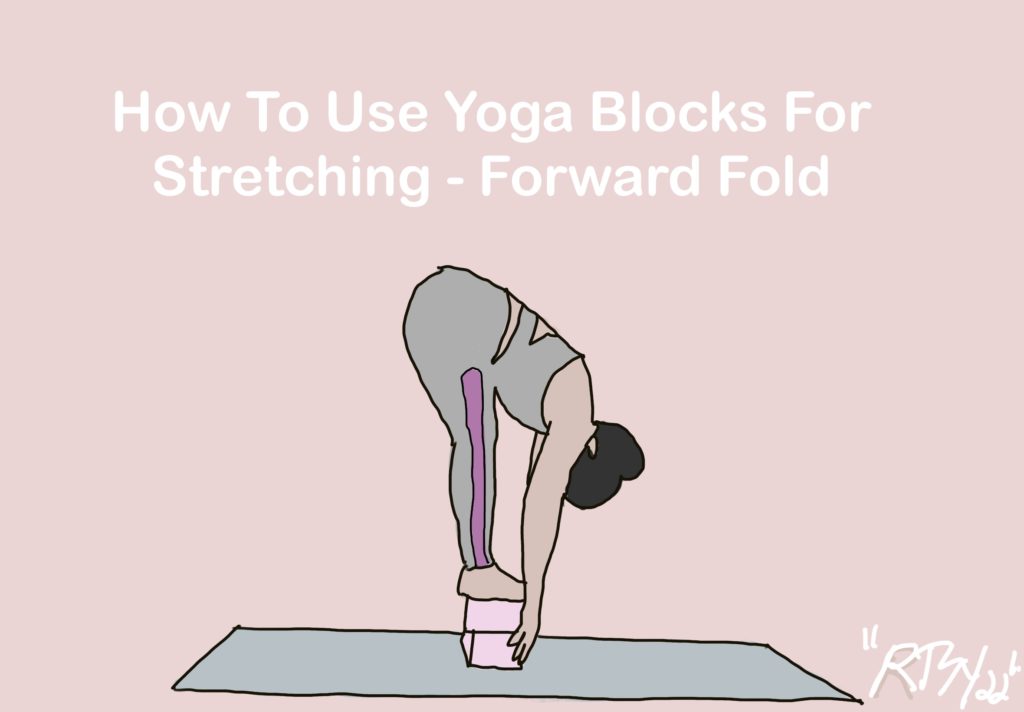Do you suffer from tight muscles because of stress and other factors? Then you probably know that yoga is a fantastic way to stretch all body muscles. You can do many poses to stretch the body, including several great options with yoga blocks for stretching.
Let’s review how To use yoga blocks For stretching.
Table of Contents
Yoga Stretching Benefits
Yoga is one of the best exercises to improve your strength and flexibility without a lot of stress on the back and joints. Poses in yoga work their magic by slowly stretching your muscles to comfortable limits. Over several weeks of practice, you should notice you have increased flexibility as your muscles get stretched beyond their standard capacities.
One study found that people over time in yoga increased their flexibility by at least 30%. Imagine how much more flexible you can be after a few weeks of yoga practice!
Some types of yoga, including power yoga and ashtanga, are more physical. So doing one of these types should boost your muscle town. However, many less intense types of yoga, such as hatha or Iyengar, can offer more endurance and stretching poses.
Clearly, yoga practices offer many benefits for improving flexibility and stretching. Let’s look at some poses to stretch with blocks:
Downward Facing Dog With Yoga Blocks
Downward facing dog is a classic yoga pose that you feel throughout your back, legs, and arms. But with the regular position, you could overextend your shoulders when you attempt to make the hamstrings and spine longer. Therefore, it’s vital in the downward dog to perform an external rotation of your shoulders. For most of us, this is difficult while keeping a strong connection to the ground with the hands.
But when you put yoga blocks under your hands, you must press the palms down hard, so you do not slide. Here’s how to do this pose with blocks:
- Start on the hands and knees in the classic yoga tabletop position. Put a yoga block under each hand.
- Put your toes under and press the palms hard into the blocks. Breathe out while lifting your hips high to the ceiling. You also should have the shoulders a bit forward over the wrists. Check if the triceps are engaged.
- Pull the lower abs up and in. Your core should be engaged as much as possible. Point the tailbone to the ceiling and look back to your upper legs. Hold for up to eight seconds and repeat.

Standing Forward Fold
The classic standing forward fold begins with your feet shoulder-width apart. You put a small bend in the knees and breathe out as you fold forward slowly and reach your hands towards both feet. Then, fold over the legs and bend to the knees enough so your upper body rests on the thighs. Let your head and neck loose and hang there for eight seconds.
If you add blocks to this pose, it feels terrific! Plus, it has significant benefits for the back and digestive tract. In addition, putting blocks over the thighs so the hip bones are supported reduces lower back strain. Here’s how to do the pose with blocks:
- Begin the pose with your feet shoulder-width apart. Put the yoga block down vertically on each thigh. Put the top of the yoga block resting below the hip bones.
- Put a slight bend in both knees. Place the hands on the blocks and breathe out as you fold forward slowly. You should be lowering the torso over your blocks.
- Put your hands onto the floor and allow to let the head hang. You should feel a release of tension in the lower back. Also, the yoga blocks should press on the colon, improving digestion. Hold this pose for at least eight breaths.
Triangle Pose
This can be a challenging pose even if you are experienced. Holding the pose for more than a few seconds can be challenging without a block. But with a block, it’s much easier to stack the hips and open the chest. This stabilizes your core and opens the hips and hams. Here’s how to do the triangle pose with blocks:
- Stand with your feet wide apart. Point the right toes ahead and turn the left foot at 90 degrees. Put a vertical block on the inside of the right foot.
- Stand tall and extend both arms and reach out your fingertips. Flex your abs and quads. With the back straight, breathe in, reach the right hand down, and push the hips back. When you breathe, move your arms to the 12 and 6 positions.
- Put the right hand on the block and ensure you keep your spine straight. Also, keep the chest open toward the ceiling to reduce stress on the lower back.
Summary of How To Use Yoga Blocks For Stretching
These yoga poses with blocks can be helpful for more stretching and flexibility, so work them into your practice to enjoy fast results.

